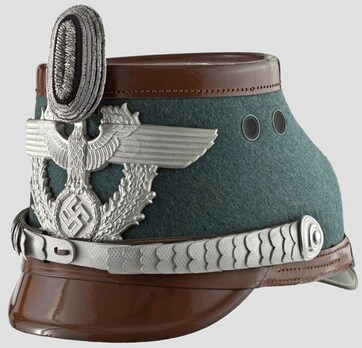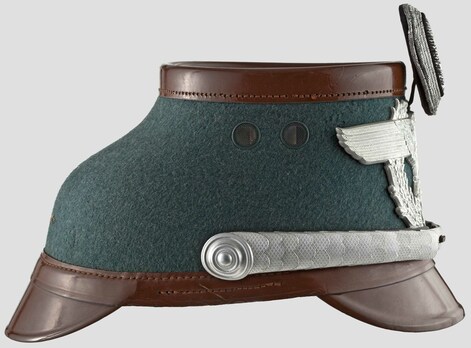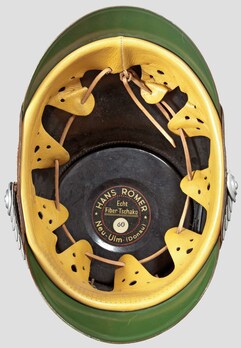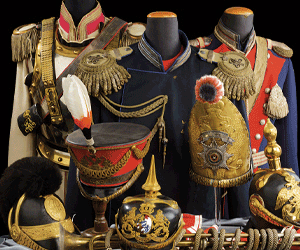German Police Officer's Brown-Fitted Shako Cap
SKU: 52.GOR.01.01.02.02.002
Estimated market value:



Estimated market value:
Attributes
History
During the Third Reich, an effort was made to unite all of Germany’s disparate provincial police forces and agencies into a single cohesive national unit. To attain this goal, Reichsführer-SS Heinrich Himmler was named Chief of the German Police in the Ministry of the Interior in June 1936. That same month, Himmler implemented new standardized uniforms, headgear, and insignia. The uniforms worn prior to Himmler’s appointment were often navy blue, particularly in what had been Prussia. The new uniforms were green, in a shade that was then dubbed “Police green”.
The German Police were divided into two main units, the Ordnungspolizei (Orps or Regular Police) and the Sicherheitspolizei (Secret Police); the Ordnungspolizei were unofficially called the green police (Grüne Polizei) as a result of their uniform colour. The Sicherheitspolizei were made up of two main organizations, the Gestapo and the Kriminalpolizei (Criminal Investigation Police). At the beginning of the Second World War, the Sicherheitspolizei were brought under the auspices of the Reich Main Security Office.
The Ordnungspolizei was also divided into smaller branches of service, and each branch was associated with a branch of service/troop colour (Truppenfarbe). The troop colours include:
Schutzpolizei des Reichs (National Protection Police): Green
Schutzpolizei der Gemeinden (Municipal Police) pre-1942: Red
Schutzpolizei der Gemeinden (Municipal Police) post-1942: Green
Gendarmerie (Gendarmes/Rural Police): Orange
Verwaltungspolizei (Administrative Personnel) pre-1942: Red over grey
Verwaltungspolizei (Administrative Personnel) post-1942: Light grey
Feuerschutzpolizei (Fire Protection Police): Carmine
Wasserschutzpolizei (Water Protection Police): Yellow
The uniform garments worn by members of the Wasserschutzpolizei (Water Protection Police) and the Feuerschutzpolizei (Fire Protection Police) remained blue after the 1936 uniform redesign.
The shako caps had the same general design from the beginning of the Third Reich in 1933 until the end of the Second World War in 1945. There were some minor design attributes added to these caps in 1936. These changes included colour differences that were associated with the wearer’s branch of service and rank on the fittings, chin strap, and police eagle insignia colour.
When a shako features brown vulcanized fibre and leather fittings (visor, cap band, and cap top) it was worn by police personnel within the Gendarmerie (rural police) and the Polizeibeamten (police officials). Shako’s with black vulcanized fibre and leather fittings (visor, cap band, and cap top) were worn by Ordnungspolizei (order police), Schutzpolizei (protection police), and the Gemeindepolizei (local municipal police).
The wearer’s rank was represented by the style and colour of the chin strap, and the colour of the police eagle insignia. Non-Commissioned Officers (NCOs) and Enlisted Men (EMs) have leather chin straps, either brown or black, depending on their branch of service, and a silver-coloured eagle. Officers feature silver-coloured (aluminum) “lobster tail” chin straps and a silver-coloured eagle. Generals have gold-coloured “lobster tail” chinstraps and a gold-coloured eagle.
The inner lining of these shakos may feature a printed manufacturer mark, the size stamped in ink, and the date of issue stamped in ink.
A parade plume may be added to the top of the shako cap when it was worn as part of the parade uniform.


Comments
Sign in to comment and reply.


Scroll Top